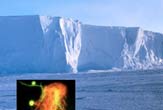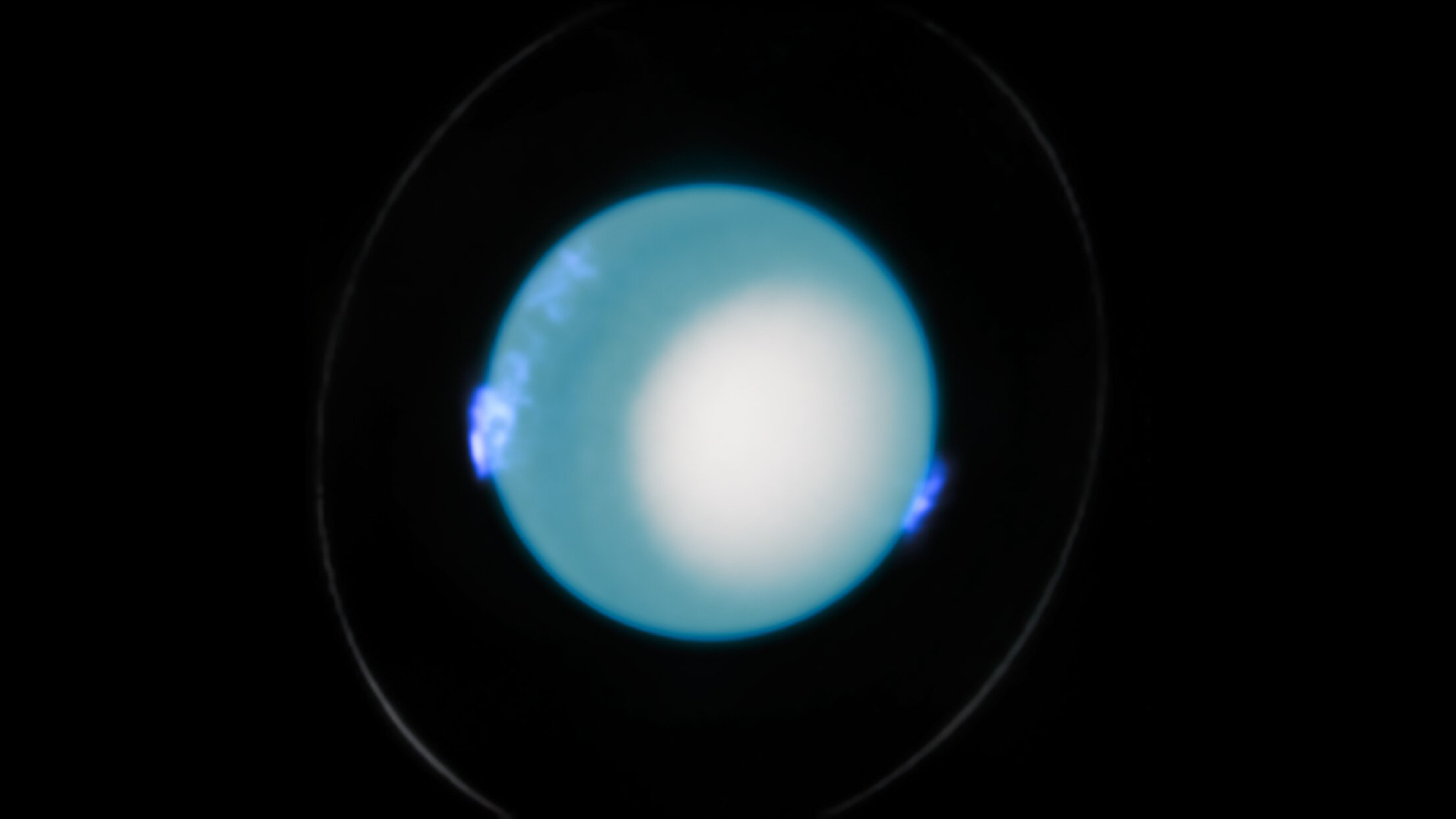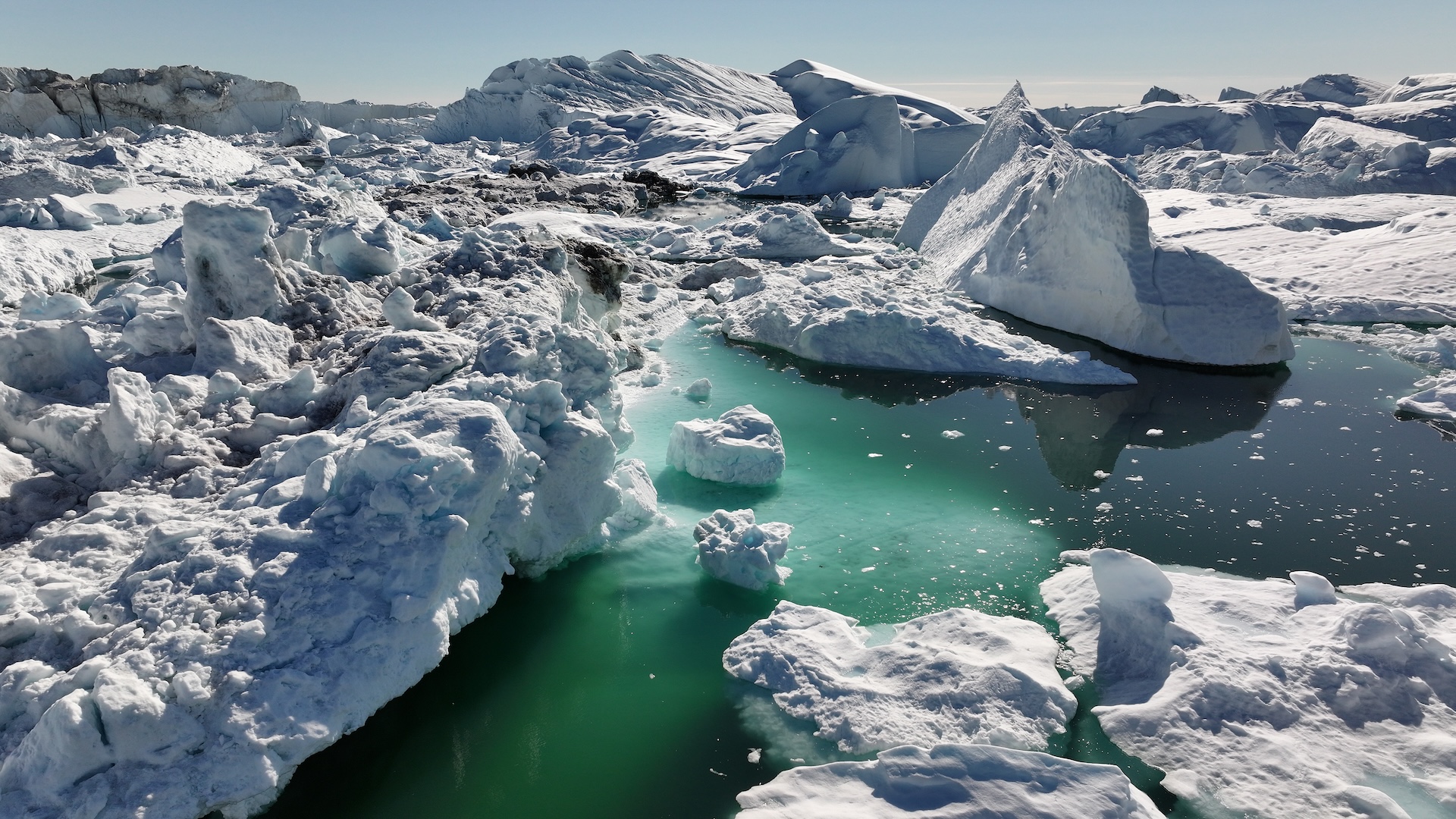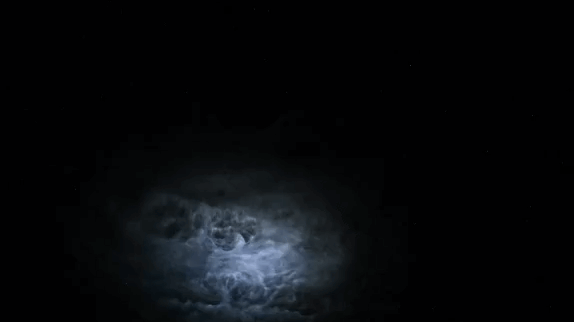Early Life Survived 'Snowball Earth'

Ancient relatives of today's plants and animals may have survived Earth's oldest, longest winter, when the planet was covered in a deep sheet of ice.
Scientists refer to this chilly period as "Snowball Earth," which first occurred more than two billion years ago. Some computer models suggest the planet was encased in a shell of ice at least a half-mile thick.
Inside rocks collected near Elliot Lake in Ontario, Canada—rocks older than Snowball Earth—scientists found oil trapped in water droplets, in the crevices of rock crystals.
Most oil is a residue of tiny organisms that once lived in the ocean. The oil contains biomarkers, or molecular fossils, that scientists can use to determine what types of life went into making it.
Alive and kicking
The Ontario oil held answers to age-old questions about when oxygen-producing bacteria and multi-cellular living organisms, called eukaryotes, first appeared on Earth.
"We can use these biomarkers to say something about what the early history of life and the planet was like," said astrobiologist Roger Buick of the University of Washington. "It gives us another powerful tool to understanding the evolution of life and Earth."
Sign up for the Live Science daily newsletter now
Get the world’s most fascinating discoveries delivered straight to your inbox.
Buick, and petroleum geochemist Adriana Dutkiewicz of the University of Sydney in Australia, found evidence in the oil that suggests eukaryotes and bacteria were alive and kicking 100 million years before the planet froze over. The finding fits with a study last year that concluded bacteria actually caused the first snowball scenario by producing oxygen that destroyed a warm blanket of methane in the atmosphere.
Details of Buick and Dutkiewicz's study are published in the June edition of the journal Geology.
The research calls into question the severity of Earth's snowball, however. The eukaryotes would not have survived a total, global ice age over a long period of time, according to Buick. "That kind of ice coverage chokes off photosynthesis, so there's no food for anything, particularly eukaryotes," he said. "They just couldn't survive," he said. "But this research shows they did survive."
If they could live through the toughest, coldest models of Snowball Earth, such hardy microbes could probably make a living on the frozen moons of Jupiter, he said.
"That's pretty extreme," Buick told LiveScience.
Another interpretation
However, one proponent of the Snowball Earth theory said that Buick's findings aren't contradictory to the deep-freeze model.
"No matter how thick the ice was, if you had eukaryotes before the freezing, there are still going to be survivors somehow making a living—even in complete darkness," said geologist Mark McMenamin of Mount Holyoke College. "I don't think this tells us whether Snowball Earth was severe or not because I think eukaryotes would have survived either way."
This is the second time Buick has found evidence of eukaryotes existing before Snowball Earth.
Some scientists disputed his initial research on the topic, published in 1999, suggesting that even a diesel truck driving by the lab could contaminate his previous samples and results.
This time, the "foolproof" rock crystals protected the oil from any pollutants, Buick said.
"In a study of this sort, there's always the possibility of contamination," McMenamin told LiveScience. "They've done a good job ruling it out."
Chilling Image Galleries
Extreme Creatures and Harsh Habitats










